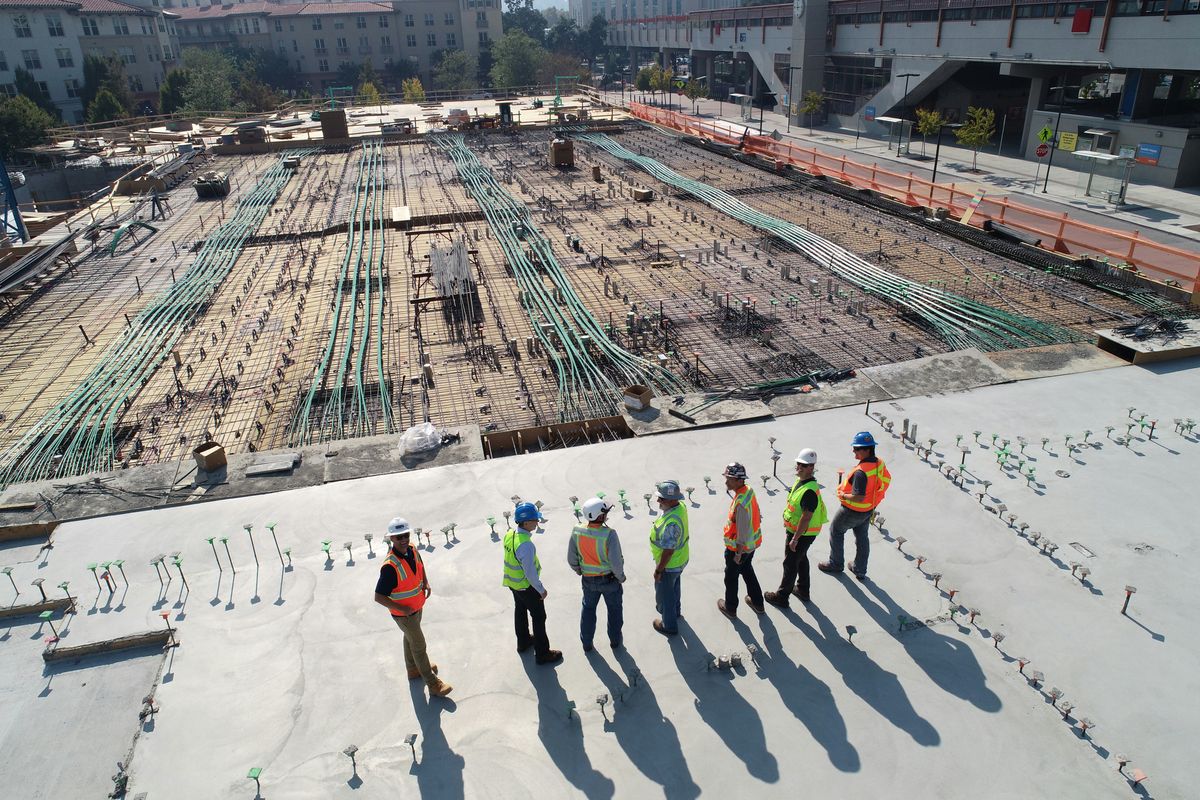Late payments in construction projects can pose significant challenges, particularly when dealing with Saudi partners. To address these issues effectively, it’s crucial to understand the recovery system for late payments, evaluate the feasibility of debt recovery, and make informed decisions about legal action. This article provides a comprehensive guide to navigating late payment scenarios, outlining strategic communication with debtors, financial considerations, and the decision-making process for pursuing litigation.
Key Takeaways
- A 3-phase recovery system is in place to address late payments, starting with contact and investigation, followed by legal escalation, and concluding with a recommendation for case closure or litigation.
- Debt recovery feasibility is assessed by investigating the debtor’s assets and case facts, with recommendations made based on the likelihood of successful recovery.
- The decision to pursue legal action involves assessing litigation implications, understanding financial commitments, and considering alternative options if litigation fails.
- Collection rates are competitive and vary based on claim volume, account age, and amount, with additional costs associated with attorney-placed accounts.
- Effective debtor communication strategies include using multiple channels and understanding the role of attorneys in demanding payment.
Understanding the Recovery System for Late Payments
Overview of the 3-Phase Recovery System
In our pursuit of managing late payments with Saudi partners, we’ve established a robust 3-phase recovery system. This system is designed to escalate actions progressively, ensuring we recover funds efficiently while preserving our business relationships.
In Phase One, we hit the ground running. Within the first 24 hours of identifying a late payment, we dispatch a series of communications and initiate a thorough investigation into the debtor’s financial standing. Our team employs a mix of phone calls, emails, and other methods to reach a resolution swiftly.
Should these attempts not yield the desired results, we transition seamlessly into Phase Two. Here, the case is escalated to our network of skilled attorneys who exert legal pressure through official demands and persistent follow-ups.
If Phase Two doesn’t break the impasse, we proceed to Phase Three. At this juncture, we make a critical evaluation: if the odds of recovery are low, we recommend case closure. Conversely, if litigation seems promising, we prepare for legal action, mindful of the associated costs and implications.
Initial Actions in Phase One: Contact and Investigation
We jump into action within 24 hours of a late payment report. Our first step is to dispatch a series of four letters to the debtor, ensuring they’re aware of their outstanding obligations. Simultaneously, we conduct a thorough investigation, gathering the best financial and contact information available. This includes skip-tracing and leveraging multiple communication channels such as phone calls, emails, text messages, and faxes.
Our collectors are persistent, making daily attempts to reach a resolution within the first 30 to 60 days. If these efforts don’t yield results, we’re prepared to escalate to Phase Two, involving our network of affiliated attorneys.
The table below outlines our initial contact strategy:
| Day | Action |
|---|---|
| 1 | First letter sent and investigation initiated |
| 2-30 | Daily contact attempts via various channels |
| 31-60 | Continued attempts and preparation for legal escalation |
Our goal is to resolve the matter swiftly, but we’re ready for the next steps if needed. With a recovery system that includes initial contact, legal action, and competitive collection rates, we’re equipped to handle the complexities of dealing with late payments in construction projects with Saudi partners.
Transition to Phase Two: Legal Escalation
When our initial efforts to secure payment hit a wall, we escalate to Phase Two. Our affiliated attorneys step in, brandishing the weight of legal letterhead to demand what’s owed. Here’s what unfolds:
- The attorney drafts a stern demand letter.
- Phone calls intensify, adding legal gravity.
- If the debtor remains unresponsive, we prepare you for the potential of litigation.
We’re transparent about the challenges. If the debtor’s assets and case facts suggest slim recovery chances, we advise against throwing good money after bad.
Our fee structure in this phase remains competitive, reflecting our commitment to your cause. Here’s a snapshot:
| Claim Volume | Collection Rate |
|---|---|
| 1-9 Claims | 50% |
| 10+ Claims | 40% |
Persistence is key, but so is pragmatism. We balance relentless pursuit with realistic expectations, ensuring you’re not caught in a costly legal quagmire.
Evaluating the Feasibility of Debt Recovery
Investigating the Debtor’s Assets and Case Facts
We dive deep into the debtor’s financial landscape. Our initial step: a thorough investigation of the debtor’s assets. We leave no stone unturned, from real estate holdings to bank accounts. We assess the solidity of the case facts, ensuring we have a strong foundation for recovery actions.
Transparency is key. We document every finding, every piece of evidence. This meticulous approach is crucial for the next steps:
- Determining the debtor’s ability to pay
- Assessing the enforceability of claims
- Identifying potential legal obstacles
We’re not just chasing debts; we’re building a case for recovery.
Our goal is clear: to evaluate the feasibility of debt recovery. If the assets and facts don’t stack up, we’re upfront about it. We’ll recommend case closure if the likelihood of successful recovery is low. But if the potential for recovery is there, we gear up for the next phase.
Determining the Likelihood of Successful Recovery
We weigh every factor when assessing recovery chances. Our investigation is thorough, scrutinizing the debtor’s assets and the case’s intricacies. We’re realistic about outcomes; not every case is winnable. Our experience in debt recovery services guides us, especially in Saudi projects where cultural, legal, and language barriers loom large.
We’re committed to a clear-eyed evaluation. If the odds are against us, we recommend case closure. But if there’s a viable path, we gear up for litigation.
Our decision hinges on a set of criteria:
- The age and solvency of the debtor
- The size and age of the debt
- The debtor’s response to initial collection efforts
We’re transparent about the process. If litigation is advised, we lay out the costs upfront. No hidden fees, no surprises. Our goal is to recover your funds with minimal fuss and maximum efficiency.
Recommendations for Case Closure or Litigation
At the crossroads of decision, we stand with two paths before us. If the odds are against us, with little chance of recovery, we’ll advise to close the case. This means no fees owed to us or our affiliated attorneys. But if litigation seems promising, the choice is yours.
Choose not to pursue legal action, and you can either withdraw the claim or let us continue standard collection efforts. Opt for litigation, and upfront costs will apply, typically between $600 to $700. These cover court costs and filing fees, with our attorney ready to represent your interests.
Our commitment is clear: if litigation doesn’t yield results, you owe us nothing.
Our rates are competitive, structured to reflect the volume and age of claims. Here’s a snapshot:
- For 1-9 claims, rates range from 30% to 50% of the amount collected, depending on the account’s age and amount.
- For 10 or more claims, the rates are slightly lower, from 27% to 50%.
Remember, managing non-payment in industrial machinery trade with Saudi Arabia demands a structured approach, tailored to the unique Saudi context.
The Decision-Making Process for Legal Action
Assessing the Implications of Pursuing Litigation
When we consider taking legal action, we weigh the potential benefits against the costs and risks. Expert guidance is crucial in navigating the complexities of late payments in Saudi Arabia. We evaluate the viability of litigation transparently, factoring in the debtor’s financial position to make cost-effective decisions.
Our approach is data-driven, with collection rates tailored to the account’s age and size. Here’s a snapshot of our competitive rates:
- Accounts under 1 year: 30% (1-9 claims) or 27% (10+ claims)
- Accounts over 1 year: 40% (1-9 claims) or 35% (10+ claims)
- Accounts under $1000: 50% regardless of claim volume
- Attorney-placed accounts: 50% regardless of other factors
We must consider the likelihood of successful recovery versus the financial commitments required. If litigation is deemed unviable, we recommend case closure, ensuring you owe nothing for our services.
Understanding the Financial Commitments and Fees
When we decide to take legal action, understanding the financial commitments is crucial. We must be prepared to cover upfront legal costs, which include court costs and filing fees. These fees typically range from $600 to $700, depending on the debtor’s jurisdiction.
Once we initiate litigation, our affiliated attorney will represent us, seeking to recover all monies owed, including the cost to file the action. If litigation proves unsuccessful, we’re not left with additional financial burdens; the case is closed, and we owe nothing further.
Our collection rates are competitive and tailored to the volume of claims. Here’s a quick breakdown:
- For 1-9 claims, rates vary by account age and amount.
- For 10 or more claims, we benefit from reduced rates.
It’s essential to weigh these costs against the potential recovery to ensure a sound financial decision. We’re in this together, strategizing to overcome challenges, including payment delays and cultural differences, for successful debt recovery and project completion.
Options Available if Litigation is Deemed Unsuccessful
When we face the tough decision that litigation may not lead to recovery, we pivot to alternative strategies. We don’t leave you stranded; instead, we explore every viable option to recoup your funds. If our evaluation of the case suggests a low likelihood of success, we’ll advise on case closure, ensuring you’re not burdened with unnecessary costs.
Our commitment is clear: no recovery, no payment to our firm or affiliated attorney.
We also offer the flexibility to revert to standard collection activities, such as calls and emails, if you choose to withdraw from legal action. Here’s a quick rundown of the options:
- Withdraw the claim with no fees owed
- Continue with standard collection efforts
- Closure of the case if recovery is unfeasible
Remember, our rates are competitive, and we tailor them based on claim volume and account specifics. We’re here to guide you through this final phase with precision and expertise, ensuring the recovery process is handled with the utmost care.
Financial Considerations and Collection Rates
Competitive Collection Rates Based on Claim Volume
We understand that the cost of debt recovery is a critical factor for our clients. That’s why we offer competitive collection rates that are tailored to the volume of claims. Our rates are designed to incentivize higher volumes of claims, ensuring that our clients can pursue debt recovery without prohibitive costs.
Collection rates vary depending on the age of the account and the total number of claims submitted. Here’s a quick breakdown:
| Claims Submitted | Accounts < 1 Year | Accounts > 1 Year | Accounts < $1000 | Attorney-Placed Accounts |
|---|---|---|---|---|
| 1-9 | 30% | 40% | 50% | 50% |
| 10+ | 27% | 35% | 40% | 50% |
We strive to balance assertive recovery strategies with the financial realities of our clients. Tailored recovery strategies with competitive rates based on account age and volume. Consider collection rates, fees, and legal costs for effective debt recovery.
Remember, the goal is to maximize recovery while minimizing costs. By leveraging our tiered pricing structure, we can offer more favorable rates for larger claim volumes, making the recovery process as efficient as possible.
Rate Variations by Account Age and Amount
We understand that time is money, especially when it comes to unpaid debts. The older the account, the steeper the collection rate—a reflection of the increased difficulty in recovering funds as time passes. For accounts under a year old, we offer a more favorable rate, acknowledging the higher likelihood of successful collection.
Volume also plays a crucial role. Submitting a higher number of claims within the first week can lead to reduced rates, rewarding your proactive approach to debt recovery. Here’s a quick breakdown:
| Claims Submitted | Account Age | Collection Rate |
|---|---|---|
| 1-9 | < 1 year | 30% |
| 1-9 | > 1 year | 40% |
| 10+ | < 1 year | 27% |
| 10+ | > 1 year | 35% |
For smaller debts under $1000, regardless of the number of claims, the rate is fixed at a higher percentage due to the disproportionate effort required in relation to the amount recovered.
Our competitive rates are designed to align with your recovery goals, ensuring that we’re both invested in the successful resolution of your late payments with Saudi partners.
Costs Associated with Attorney-Placed Accounts
When we escalate to an attorney, the financial landscape shifts. Attorney-placed accounts incur specific costs, distinct from earlier phases. Legal fees typically range from $600 to $700, a necessary investment to propel the case into the judicial system. Here’s a breakdown of our collection rates for attorney-placed accounts:
- Accounts under 1 year: 50% of the amount collected
- Accounts over 1 year: 50% of the amount collected
- Accounts under $1000: 50% of the amount collected
Should litigation prove unsuccessful, we close the case with no additional fees to you. This ensures a risk-managed approach to debt recovery, aligning our interests with your financial well-being.
Remember, a failure in Phase One leads us to engage with our affiliated attorney, moving into Phase Two. If litigation is the chosen path and does not yield results, we stand by our commitment: the case is closed with no fees owed.
Strategies for Effective Communication with Debtors
Utilizing Multiple Channels for Debt Resolution
We embrace a multi-faceted approach to debt resolution. Persistence is key; we deploy a variety of communication methods to ensure our message is heard. Our strategy includes phone calls, emails, text messages, and faxes, each tailored to the debtor’s preferences and responsiveness.
Flexibility in our approach allows us to adapt to the unique circumstances of each case. We understand that navigating the complexities of Saudi Arabian business culture is essential, especially when negotiating late payment penalties and terms. Building relationships and leveraging contractual agreements are part of our core tactics.
We make daily attempts to contact debtors in the initial phase, transitioning to legal escalation if necessary. Our goal is to achieve resolution swiftly and efficiently.
Here’s a quick glance at our communication frequency in Phase One:
- Daily attempts for the first 30 to 60 days
- Four letters sent via US Mail within the first 24 hours
- Continuous skip-tracing and investigation for optimal contact information
Frequency and Methods of Contact in the Collection Process
We’re relentless in our pursuit of debt resolution. Daily attempts to reach out are our standard, with a mix of phone calls, emails, text messages, and faxes. We understand the importance of persistence without crossing the line into harassment.
Our approach is systematic:
- Initial contact within 24 hours of account placement
- A series of four letters sent via mail
- Skip-tracing to update debtor information
- Regular follow-ups for the first 30 to 60 days
We tailor our communication strategy to each debtor’s response, ensuring maximum impact while maintaining professionalism.
Remember, the goal is to maintain a positive relationship with the debtor. Flexibility in negotiations can lead to better outcomes. But, we’re also prepared to escalate legally if necessary, always keeping in mind the legal considerations in Saudi Arabia.
The Role of Attorneys in Communicating Payment Demands
We understand the strategic approach to enforcing payment terms, especially in complex USA-Saudi renewable energy projects. Our attorneys are at the forefront, utilizing demand letters and negotiation tactics before considering litigation. Their expertise in debt recovery and legal frameworks is crucial.
Our attorneys don’t just send letters; they embody the voice of persistence and legal acuity. They’re the bridge between amicable resolutions and the courtroom.
When our attorneys step in, they send a clear message: we mean business. They use a combination of letters on law firm letterhead and direct calls to ensure debtors understand the gravity of the situation. Here’s what you can expect:
- Immediate drafting and dispatch of demand letters.
- Persistent contact attempts via phone, supplemented by emails and faxes.
- A thorough investigation into the debtor’s assets and case facts.
If these efforts don’t yield results, we’re prepared to recommend the best course of action, whether that’s case closure or escalation to litigation.
Mastering the art of communication with debtors is crucial for successful debt recovery. At Debt Collectors International, we specialize in tailored strategies that respect both parties while ensuring your receivables are prioritized. Our expert collectors are ready to serve you with over 30 years of experience in industries ranging from healthcare to finance. Don’t let overdue accounts disrupt your cash flow. Visit our website to learn more about our no recovery, no fee policy and take the first step towards effective debtor management. Act now and ensure your business’s financial health.
Frequently Asked Questions
What happens in Phase One of the Recovery System?
In Phase One, within 24 hours of placing an account, a series of four letters are sent to the debtor, the case is skip-traced and investigated, and our collectors attempt to contact the debtor through various means. If after 30 to 60 days all attempts fail, the case moves to Phase Two.
What actions are taken when a case transitions to Phase Two?
In Phase Two, the case is forwarded to an affiliated attorney within the debtor’s jurisdiction, who sends a series of letters on law firm letterhead demanding payment and attempts to contact the debtor via phone. If these attempts also fail, we proceed to the final phase.
What are the possible recommendations after Phase Three investigation?
After thorough investigation, if recovery seems unlikely, we recommend case closure with no cost to you. If litigation is recommended, you must decide whether to proceed with legal action or continue standard collection activities.
What are the upfront legal costs if I decide to litigate?
If you decide to proceed with litigation, you will need to pay upfront legal costs such as court costs and filing fees, typically ranging from $600.00 to $700.00, depending on the debtor’s jurisdiction.
What are the collection rates for accounts under 1 year in age?
For 1 to 9 claims, the rate is 30% of the amount collected. For 10 or more claims, it is 27%. These rates apply to accounts under 1 year in age.
What happens if attempts to collect via litigation fail?
If our attempts to collect the debt via litigation fail, the case will be closed, and you will owe nothing to our firm or our affiliated attorney.





